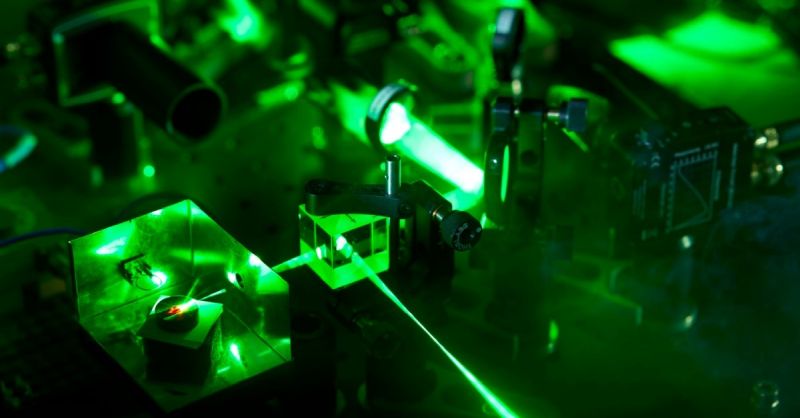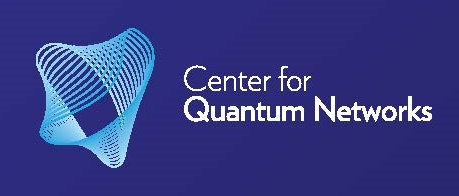NSF CQN Addresses Quantum Sensing Challenge
Outcome/Accomplishment
In FY 2023, researchers at universities across the United States were awarded funding from the U.S. National Science Foundation (NSF) Quantum Sensing Challenges for Transformational Advances in Quantum Systems. Each of the 18 research teams is receiving $1-2 million over four years to study quantum phenomena. The funding supports discoveries into how the universe works, such as projects measuring mountains with an ultraprecise atomic clock and studying the inner functions of living cells with quantum-entangled particles of light. One award went to Harvard University, a partner institution on the NSF Center for Quantum Networks (NSF CQN), an NSF-funded Engineering Research Center (ERC) based at the University of Arizona. The Harvard project is titled “Quantum sensor networks for metrology, chemistry and astrophysics.” The research team is exploring how to use networks of distributed quantum sensors that harness coherence and entanglement for a variety of applications such as magnetic field sensing, remote sensing, and imaging and detecting ultralow concentrations of specific molecules or proteins.
Impact/Benefits
Historically, advances in quantum science have led to surprising new discoveries about how the universe works. The funding of these projects intends to yield improved efficiency across science and engineering, such as using entangled photons to view neurons in living organisms to bring greater efficiency in imaging biological processes. Beyond supporting new discoveries, the funding will yield increased interest in quantum science due to the support for teams’ outreach to teachers and students in K-12 and community college systems.
Explanation/Background
The funding program is part of NSF’s broader strategy to realize the scientific and technological advances called for in the National Quantum Initiative Act passed by Congress in 2018, as well as the National Science and Technology Council’s Bringing Quantum Sensors to Fruition report in 2022. The total funding investment is $29 million and will back 18 teams.
The research teams are located in states participating in the NSF’s Established Program to Stimulate Competitive Research (EPSCoR) program which provides funding to areas in the United States which have historically received less federal funding for research than other locations.
All teams will conduct education and outreach activities along with their research and development work. These include K-12 programs with students and other mentorship programs aimed at inspiring students to pursue a career in quantum-related science and engineering.
Location
Tucson, Arizonawebsite
Start Year
Microelectronics and IT
Microelectronics, Sensing, and IT
Lead Institution
Core Partners
Fact Sheet
Outcome/Accomplishment
In FY 2023, researchers at universities across the United States were awarded funding from the U.S. National Science Foundation (NSF) Quantum Sensing Challenges for Transformational Advances in Quantum Systems. Each of the 18 research teams is receiving $1-2 million over four years to study quantum phenomena. The funding supports discoveries into how the universe works, such as projects measuring mountains with an ultraprecise atomic clock and studying the inner functions of living cells with quantum-entangled particles of light. One award went to Harvard University, a partner institution on the NSF Center for Quantum Networks (NSF CQN), an NSF-funded Engineering Research Center (ERC) based at the University of Arizona. The Harvard project is titled “Quantum sensor networks for metrology, chemistry and astrophysics.” The research team is exploring how to use networks of distributed quantum sensors that harness coherence and entanglement for a variety of applications such as magnetic field sensing, remote sensing, and imaging and detecting ultralow concentrations of specific molecules or proteins.
Location
Tucson, Arizonawebsite
Start Year
Microelectronics and IT
Microelectronics, Sensing, and IT
Lead Institution
Core Partners
Fact Sheet
Impact/benefits
Historically, advances in quantum science have led to surprising new discoveries about how the universe works. The funding of these projects intends to yield improved efficiency across science and engineering, such as using entangled photons to view neurons in living organisms to bring greater efficiency in imaging biological processes. Beyond supporting new discoveries, the funding will yield increased interest in quantum science due to the support for teams’ outreach to teachers and students in K-12 and community college systems.
Explanation/Background
The funding program is part of NSF’s broader strategy to realize the scientific and technological advances called for in the National Quantum Initiative Act passed by Congress in 2018, as well as the National Science and Technology Council’s Bringing Quantum Sensors to Fruition report in 2022. The total funding investment is $29 million and will back 18 teams.
The research teams are located in states participating in the NSF’s Established Program to Stimulate Competitive Research (EPSCoR) program which provides funding to areas in the United States which have historically received less federal funding for research than other locations.
All teams will conduct education and outreach activities along with their research and development work. These include K-12 programs with students and other mentorship programs aimed at inspiring students to pursue a career in quantum-related science and engineering.

